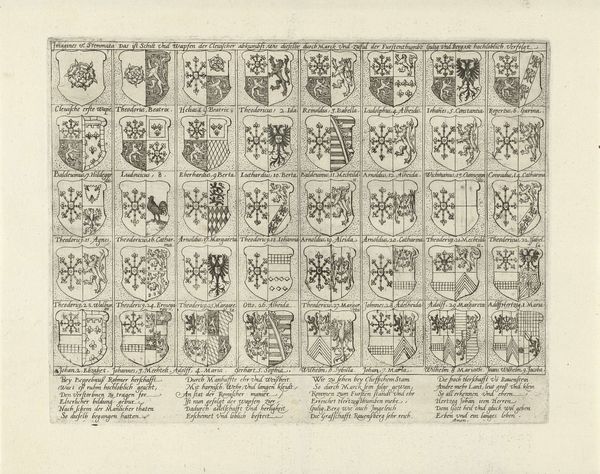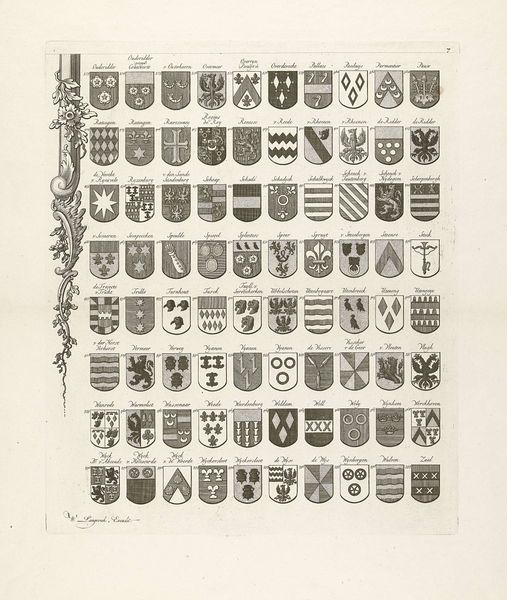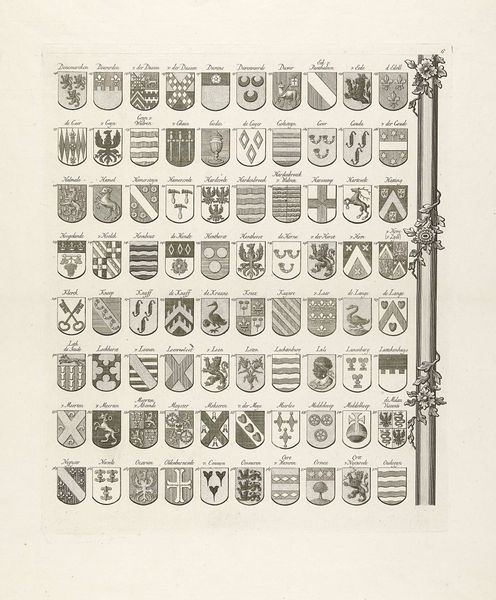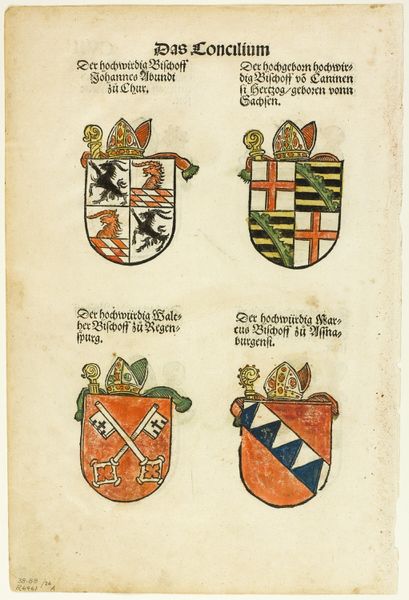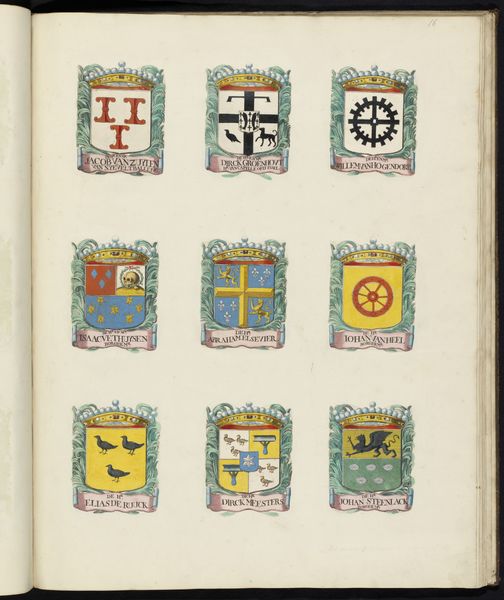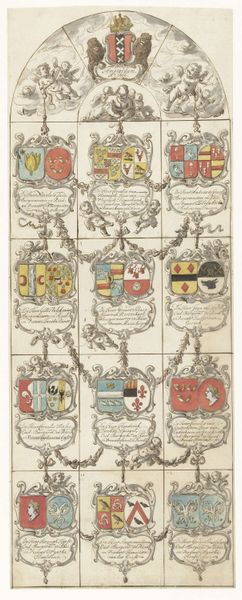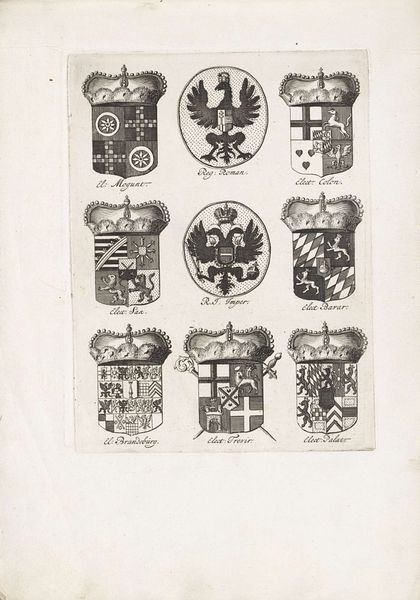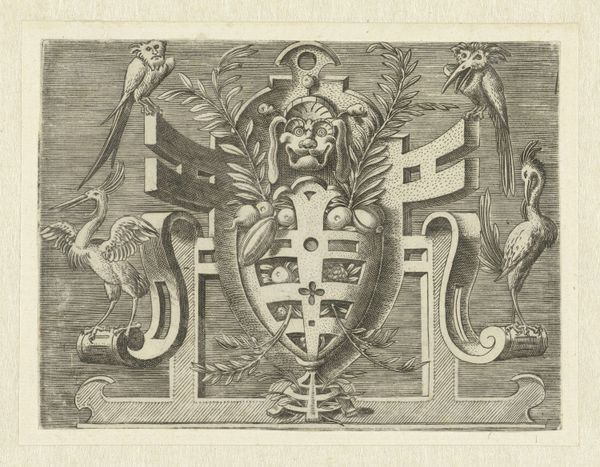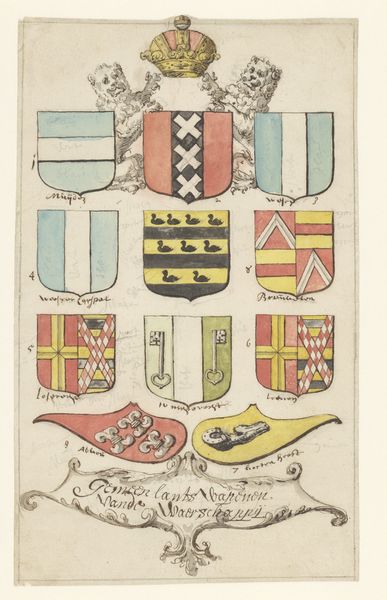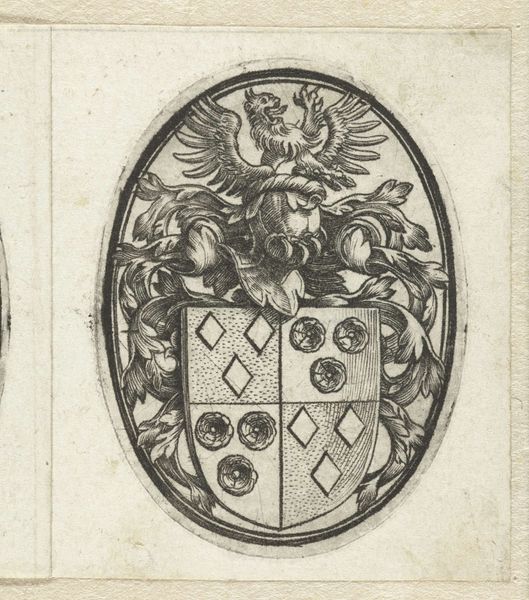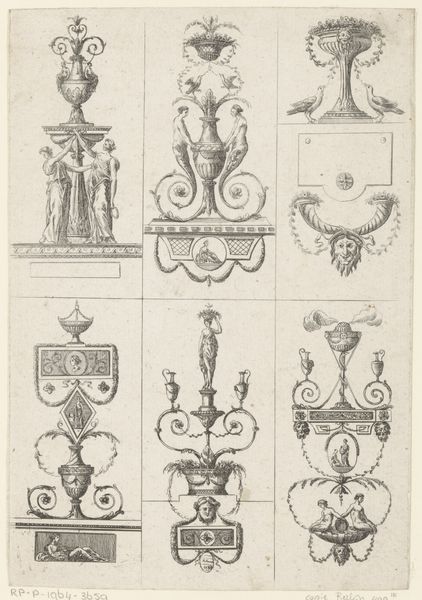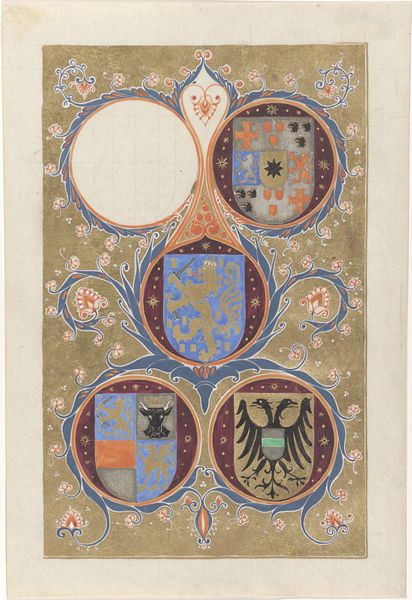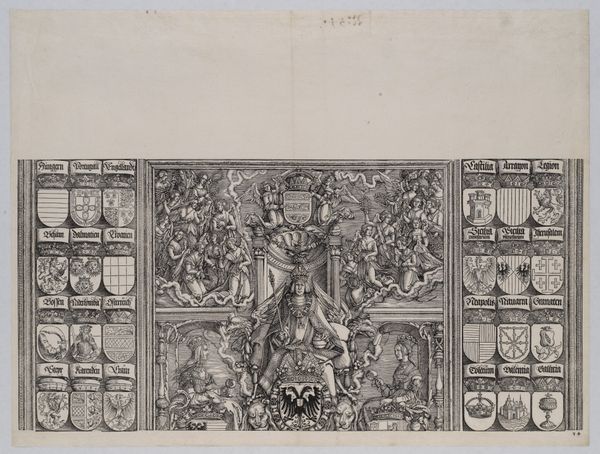
drawing, graphic-art, print, ink, engraving
#
drawing
#
graphic-art
#
medieval
#
pen drawing
# print
#
old engraving style
#
ink line art
#
ink
#
pen-ink sketch
#
pen work
#
engraving
Dimensions: height 375 mm, width 480 mm
Copyright: Rijks Museum: Open Domain
Curator: The work before us, entitled "Stamboom van het Habsburgse huis, blad achttien," was crafted between 1533 and 1535. This intricate piece is rendered in ink—an engraving, really, that takes the form of a family tree. Editor: Right away, I'm struck by its organized chaos! All these heraldic shields crammed together... It feels almost obsessive, like someone desperately trying to impose order on something sprawling and unwieldy, like family. Curator: Indeed. Semiotically, each escutcheon acts as a signifier, a symbol laden with dynastic weight, social standing, and historical claims. The genealogical structure mimics organic growth through these visual components to showcase lineages and allegiances. Editor: Allegiances, sure, but I'm also getting vibes of power plays, like these family crests jostling for space. Imagine the pressure to live up to your family's "brand," stamped right onto your identity! Curator: It is important to observe the artist’s selection and precise use of line. Each line varies only slightly in width, yet they collectively give depth and dimensionality to what would otherwise be an exercise in two-dimensional symbolic articulation. Editor: All those careful lines create a strange tension. On one hand, they’re building a picture of permanence and tradition. But there’s also something brittle about it—almost like if you pulled on one line, the whole structure could collapse! Curator: That sense of potential fragility resonates with an understanding of historical contexts. Dynasties rise and fall. A work like this serves to simultaneously celebrate and perhaps unconsciously acknowledge the impermanence of earthly power. Editor: So it's a memento mori disguised as a family portrait? A beautiful, obsessively detailed reminder that even empires turn to dust... Curator: One might say so. Its graphic rendering becomes a space for artistic and sociopolitical considerations to mingle, and ultimately provides the observer insight into 16th-century assumptions about familial structure and rule. Editor: I'm still getting stuck on this family business, all the rivalries and expectations hidden beneath those precise, symbolic coats of arms... it's heavier than it looks, which maybe speaks to its real depth.
Comments
No comments
Be the first to comment and join the conversation on the ultimate creative platform.
